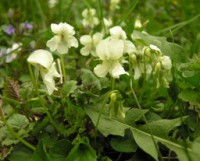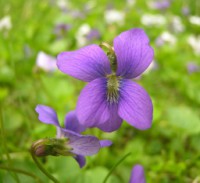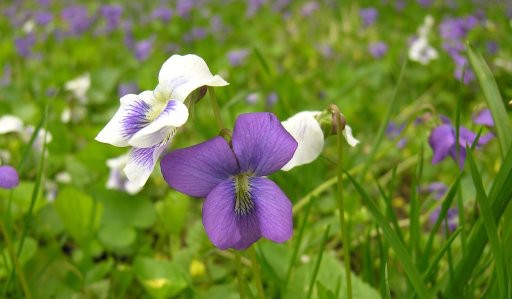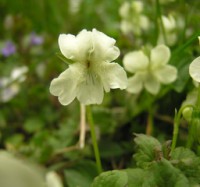I waited a little too long to take these pictures, so the violets were actually past their peak; that may be one reason I didn't really get any good head-on shots of the purple veined white violets, which I love. Perhaps next year I'll do better.
Many gardeners consider the common viola odorata a garden pest. My favorite garden book, Barbara Damrosch's Garden Primer notes that their purple-veined white cousins will ‘march through your garden faster than General E. Lee’. Personally I consider creeping charlie (Glechoma hederacea) to be a much worse pest, though its flowers too are a very pretty purple. However, it's completely taken over the back yard, and runs rampant in the beds. The violets, at least, more or less stay in the yard where they belong, providing a beautiful carpet of flowers in April.
I'm reasonably certain that the purple ones are odorata (even though I've never noticed any scent) but it turns out there's dozens of species, and I'm not at all certain which one(s) Damrosch meant by southern white violet. At any rate, both species are incredibly common where I live. New to me, however, are these smaller violets with smaller more quilted leaves, which a pure off-white.

Group shot. Note dandelion leaves—another weed I've managed to more or less eliminate from the garden, but will probably never successfully eradicate from the lawn, since I'm unwilling to use weedkillers.

What I think of as ‘violets’. It's actually better to grow them in lawns, if you can bear the mixed species, because mowing the leaves allows the flowers to show; otherwise, they're usually hidden.
images shot 30apr06. File created 24oct06.
Unless otherwise noted, text, image and objects depicted therein copyright 1996--present sylvus tarn.
Sylvus Tarn
